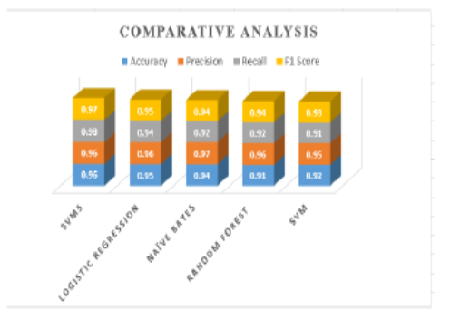


Indian Journal of Science and Technology
DOI: 10.17485/IJST/v16i10.2138
Year: 2023, Volume: 16, Issue: 10, Pages: 764-774
Original Article
Rayees Ahmad1*, Yasmin Shaikh2, Sanjay Tanwani3
1Research Scholar, International Institute of Professional Studies, DAVV, Indore (M. P.), India
2Assistant Professor, International Institute of Professional Studies, DAVV, Indore (M. P.), India
3Professor & Head, School of CS & IT, DAVV, Indore (M. P.), India
*Corresponding Author
Email: [email protected]
Received Date:04 November 2022, Accepted Date:26 December 2022, Published Date:11 March 2023
Objectives: To propose the most effective machine learning technique for aspect based sentiment analysis of consumer feedback reviews by correlating people’s emotions of different aspects of a product or service with word importance, linguistic rules, tagging, dependency relations and filtering to enhance the classification accuracy and to explore the different machine learning approaches in order to determine their significance and to spark interest in this field of study. Methods: The dataset has been taken from the most popular networking site twitter using twitter API. A total of 33,036 tweets were retrieved for this study from16 July 2022 to 16 Sept. 2022, but were only able to include 7570 tweets after data cleaning and then proposes a model named SVMS (SVM using Spacy) for sentiment Analysis. To measure the performance of a particular model, numerous analyses are conducted on the dataset and then the effectiveness of proposed model is compared with 4 basic classifiers LR, NB, RF and SVM. The parameters used in this study are accuracy, precision, recall, and F1 score. Findings: It is found that the Proposed SVMS model shows better results than all other algorithms by having 96% accuracy which is 1% faster than LR, 2% faster than NB, 5% faster than RF, and 4% faster than SVM, 96% precision, 98% recall and 97% F1 score. SVMS is recommended in this research context for the classification of the text and has a great significance for future researchers in sentences and text classification. Novelty: In this paper the performance of sentiment analysis classifiers is evaluated. In addition to general opinions, the work examines specific aspects such as product, quality, service, price, and ease of use. Comparing the proposed model with the existing models, it has been found that it outperformed the other models in most of the aspects.
Keywords: Aspect; Sentiment Analysis; NLP; Spacy; Linguistics
© 2023 Ahmad et al. This is an open-access article distributed under the terms of the Creative Commons Attribution License, which permits unrestricted use, distribution, and reproduction in any medium, provided the original author and source are credited. Published By Indian Society for Education and Environment (iSee)
Subscribe now for latest articles and news.